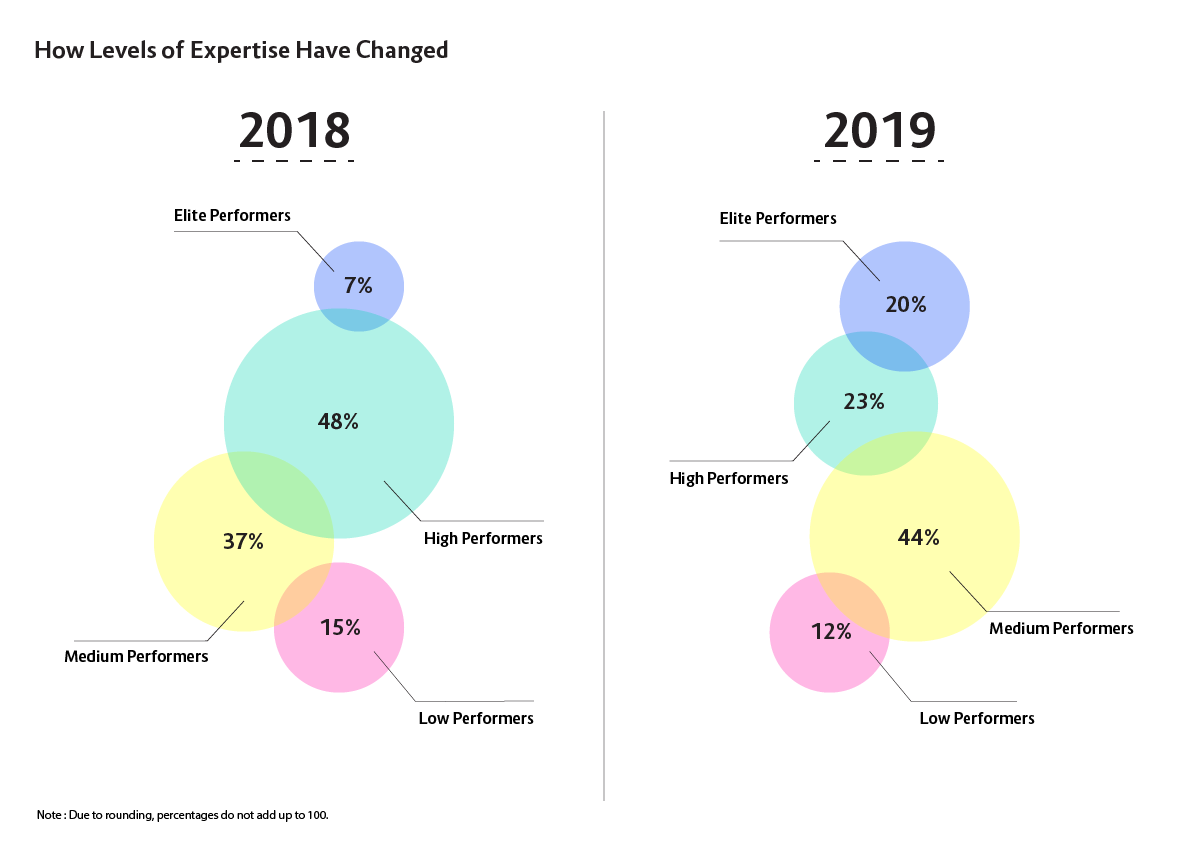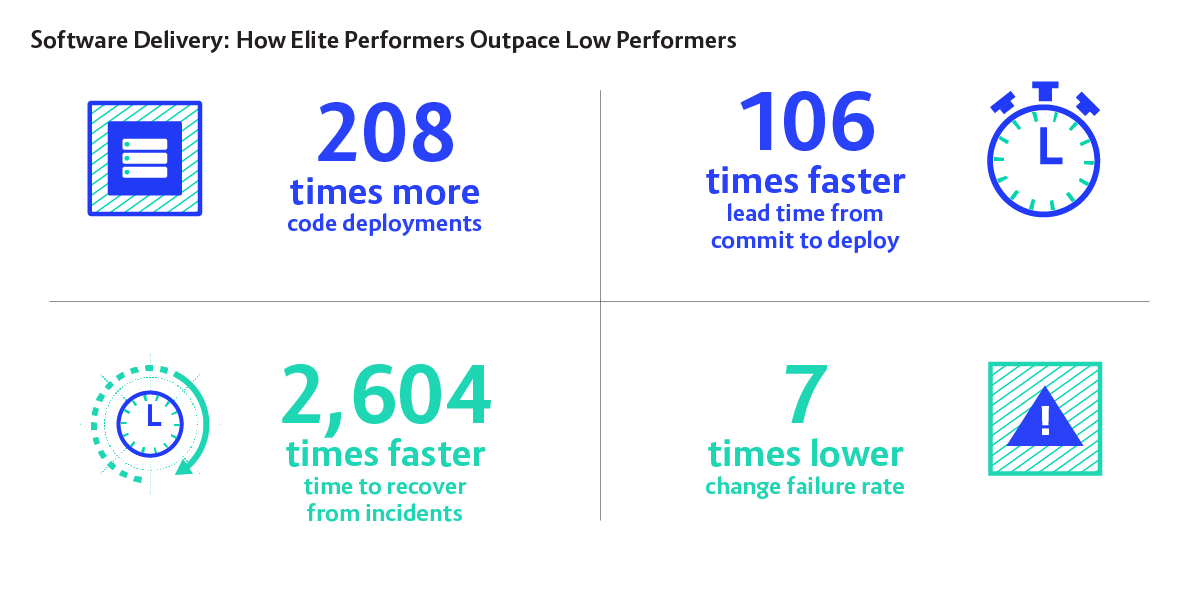First, some good news: the DevOps field’s expertise and performance is growing rapidly. Its best practices, like a clear change-approval process, not only improve speed and stability, but also help decrease engineer burnout.
And some bad news: The field’s progress on diversifying its workforce seems stalled.
And bigger companies are struggling more than smaller ones in fully adopting Cloud Native technology and practices.

The sixth annual Accelerate State of DevOps report, released by the research firm Dora and Google Cloud, offers a big-picture snapshot of our young industry. Over time, it has included responses from more than 31,000 practitioners. This year’s report sampled nearly 1,000 professionals, mostly engineers or their managers, from a variety of industries around the world.
Half of all respondents came from North America, 29 percent from Europe. One in four survey participants work for companies that employ more than 10,000 people.
Here are some key takeaways:
The percentage of ‘elite’ performers is exploding.
Twenty percent of respondents were identified by the researchers as ‘elite’ performers—nearly tripling last year’s 7 percent share. These teams were identified by the benchmarks of speed and stability they reported.
However, the study also showed a decline in the number of ‘high’ performers (23 percent this year, versus 48 percent last) and an increase in the number of ‘medium’ performers (43 percent this year, 23 in 2018).

Some of 2019’s medium performers, the report states, might be ‘high performers who dropped as they struggled with complexity.’ But complacency may also play a role, suggested Nathan Harvey, a developer advocate with Google Cloud, during the company’s webinar analysing the study’s results.
‘I’m DevOps now. Now I can stop!’ Harvey said, sitting back in his chair and folding his arms, imitating a smug manager. ‘That was quite a journey!’
Benchmarks show a gap growing between high and elite performers.
Elite DevOps teams are fuelling steady improvements in speed and stability at their organisations, and even high-performing teams are getting left in the dust. Here’s how elite and high performers compare according to three software-delivery benchmarks tracked in the study:
Deployment frequency:
- Elites deploy on-demand (multiple times a day)
- Highs deploy between once a day and once a week.
Lead time for committed code changes to go into production:
- Elites need less than one day
- Highs need between one day and one week
Time to restore service after an incident:
- Elites need less than an hour
- Highs need less than a day.
There’s room for more automation.
Elite performers were more likely than other teams to automate and integrate their tools into their toolchain. (For instance, 69 percent of elites use automated deployment to production, compared with just 60, 38 and 17 percent of high, medium, and low performers, respectively).
But less than one in three elite teams use automated performance or security tests.
A lot of people think they’re on the cloud—but they aren’t.
‘Many of our survey participants who claim to be using cloud computing haven’t actually adopted the essential patterns that matter,’ states the report. Only 29 percent of people who said they were using cloud infrastructure agreed that their organisation meets all five of the essential cloud computing characteristics identified by the National Institute of Standards and Technology: on-demand self-service, broad network access, resource pooling, rapid elasticity, and measured service.
However: Survey takers who agree that their organisations meet all those standards increased from last year’s report; the share of those who agree that they meet each standard jumped by 11 to 15 percent, depending on the category.
Enterprise organisations are struggling to keep up.
Companies with 5,000 employees are more were more likely, according to the researchers’ data analysis, to suffer low performance in terms of DevOps than groups of fewer than 5,000 workers.
The report urged large organisations not to use their bureaucracies or entrenched legacy architecture as excuses for poor performance, but to ‘recognize that excellence is possible, embark on a program of continuous improvement,’ and look to Cloud Native transformations at other large companies for ideas and inspiration.
Diversity efforts are stalled.
Just like in last year’s report, 83 percent of respondents are male. In fact, only 16 percent of teams represented in the survey include any women at all. That’s down from the 25 percent reported in last year’s study.
-
14 percent of survey participants said they are from an ‘underrepresented group’, which the researchers define broadly as ‘race, gender, or another characteristic’. Last year, the share was 13 percent. This is the third year that question gauging diversity at participants’ organisations has been included in the study.
-
6 percent of respondents said they have a disability, the same share as last year.
Better DevOps practices and process mean less burnout.
Low performers were twice as likely as the highest performers to report feeling burned out, the new study says. More reliable, less breakable applications, it seems, may also lead to more reliable, less breakable engineers!
For a deeper dive on how making a smart transition to microservices can help companies stay on top of their competitors, check out our latest white paper, “Microservices for Managers." Click below to download.




 Previous article
Previous article
